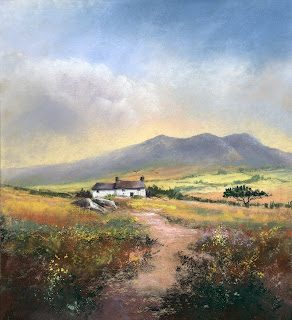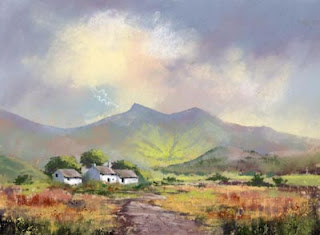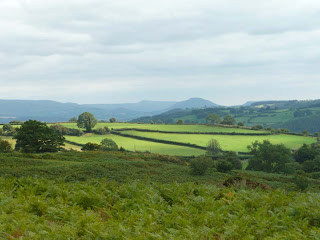
Clegyr Boia, Pembrokshire
I will be painting off and on during the day. You are welcome to come and watch.
I will also be there on Saturday 17th and Thursday 22nd .
The exhibition continues until 22nd September


Clegyr Boia, Pembrokshire
I will be painting off and on during the day. You are welcome to come and watch.
I will also be there on Saturday 17th and Thursday 22nd .
The exhibition continues until 22nd September
It’s been rather difficult of late trying to set up postings: slowness of the laptop, repetitive errors, plus the fact that I’ve been away. Sketching all the lovely mud on the Kent coast in pouring rain, doing stage-by-stage paintings at Search Press for my next book, Skies, Light & Atmosphere, attending a British Mountaineering Council conference on wind energy, crossing a bog in Snowdonia with violent headwinds that hardly improved the sketching, and setting up an exhibition in Aberglasney Gardens near Llandeilo. It takes my breath away just recalling it all.
Our exhibition is by four artists – Wendy Powell-Jones, Anthony Richards, Jenny Keal and myself, and is on until 22nd September. Aberglasney is a few miles west of Llandeilo in Carmarthenshire, in lovely rolling countryside. Come and see the gardens at the same time, and they have an excellent cafe. Jenny will be there on Thursday 15th.
Wind tends to be one of the most awkward conditions to sketch in, and the ferocious gusts up high on the mountains in Snowdonia made it extremely difficult, with pencil marks going everywhere except the intended place. Crossing stepping stones at one point was quite entertaining, as not only were they submerged under deep water, but balance in those gusts was somewhat tricky. Not a good weekend to be out on the hills!
Sometimes you may come across a lovely spot to paint, a truly heartening scene, but without an actual focal point. Without that important ingredient it is unlikely to be a great success as a composition, so what do you do? There are a number of answers to this question, and one of my favourites is to add wildlife, usually in a manner that allows the landscape to dominate, unless the wildlife is something iconic such as a polar bear, rhino or similar large creature, but we rarely find any of these around the Brecon Beacons where I do much of my sketching!
While this is only the central part of the watercolour, I have focussed at this point to illustrate how to suggest rapid movement in wildlife by softening off the edges of the birds in places such as the wing-tips, the trailing edges of the wings and the tails, while keeping the beaks and heads in reasonably sharp focus. This was one place where I appreciated having other people and their dogs around, as they caused the birds to fly off in sudden bursts, thus giving me the opportunity to sketch and photograph the action as they flew past.
I shall return to the issue of highlighting and creating centres of interest within a scene in some future blogs, but capturing fleeting moments of wildlife can be an exciting part of our work, even for landscape painters.

Brecons Beacons, pastel by Jenny Keal
I will be demonstrating pastel painting techniques at
on Saturday 10th September 2011 between 1.00 p.m. & 4.00 p.m.
Above is the painting I did as a demonstration at the station in July.
Come along and enjoy the best coffee and cakes in Powys.

Light and Atmosphere on the Black Mountains
Yesterday David and I went for a walk on the hills above our home and it occurred to me that this view of the Black Mountains illustrates perfectly aerial perspective, or recession.
Notice how the distant mountains are blue, the middle distance hill is blue/green, the bright green fields are cool green with touches of blue/green shadow and the foreground bracken is warm yellow/green.
In reality all these greens are similar in colour temperature but the atmosphere between gives this effect and it is the key to creating the illusion of a three dimensional space on a two dimensional painting surface.
This autumn David and I are demonstrating this and many other aspects of painting the landscape in two Seminars. David will be demonstrating in watercolour in Great Bookham, Surrey. Details are on the website. Also you can see detail of our painting courses for 2012 in Yorkshire, Mid Wales, Somerset and Pembrokeshire. You can also download a copy of our annual newsletter and order form.
We are also taking part in a joint exhibition at Aberglasney Gardens this month. Entry to the preview and the gardens is free from 6.30 to 9.00 p.m. on 9th September.